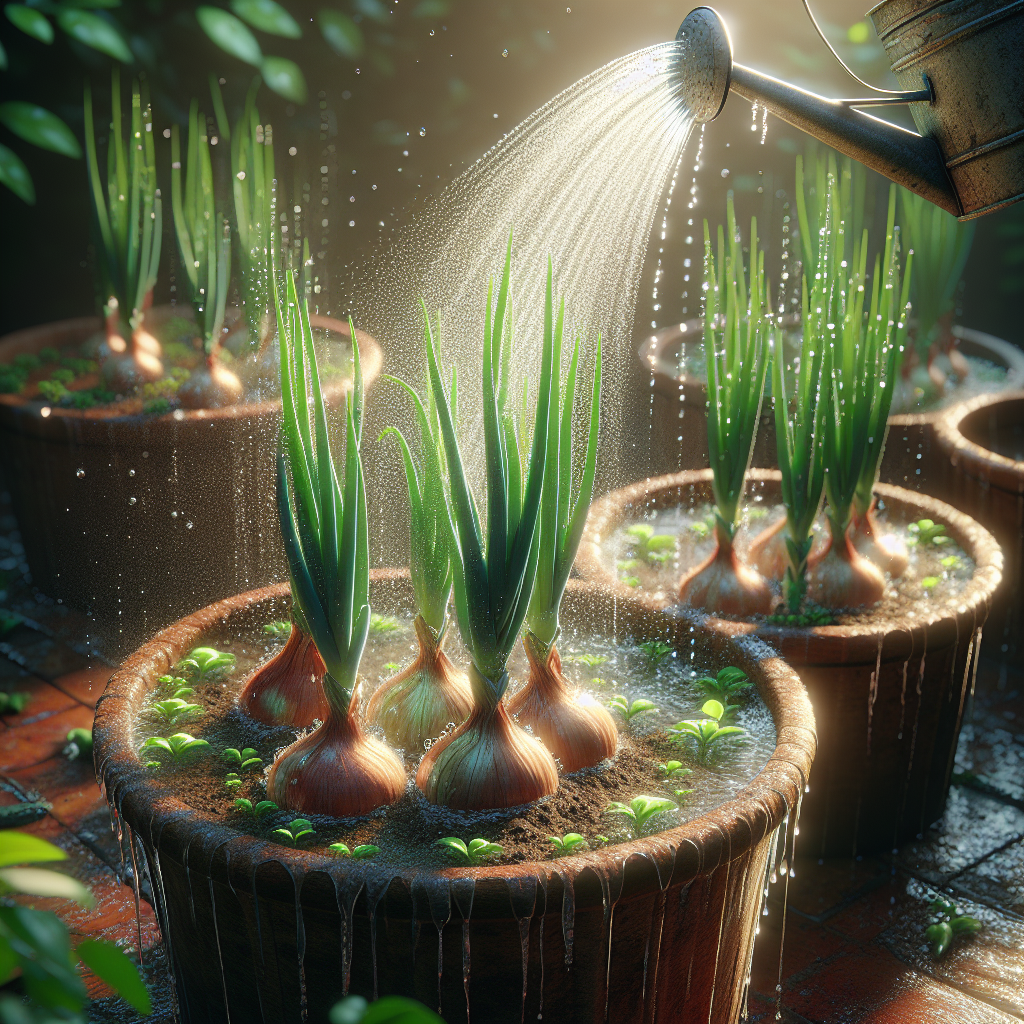Growing onions in containers can be a rewarding experience, allowing even those with limited space to enjoy the taste of fresh, home-grown onions. However, one of the key factors to successfully growing onions in containers is watering them effectively. Without proper watering, your onion plants may not thrive as they should, leading to smaller bulbs or even plant failure. In this article, we will explore the best practices for watering onions effectively in containers, ensuring that your plants receive the hydration they need to flourish.
When it comes to growing onions in containers, proper watering is crucial for their growth and development. Onions are shallow-rooted plants that require consistent moisture throughout their growing season. This means that you need to pay close attention to how much and how often you water your onion plants in containers. By understanding the specific needs of your onion plants and implementing some simple yet effective watering techniques, you can help ensure that they grow healthy and produce a bountiful harvest.
**Choosing the Right Container**
The first step in watering onions effectively in containers is choosing the right container for your plants. Onions have shallow roots and do not need a lot of space to grow, so a relatively small container will suffice. However, it’s important to select a container that provides adequate drainage to prevent waterlogging, which can lead to root rot and other issues.
When choosing a container for your onion plants, opt for one with drainage holes at the bottom to allow excess water to escape easily. This will help prevent water from pooling at the bottom of the container and drowning the roots of your onion plants. Additionally, consider using a container made of breathable material such as terracotta or plastic as it will allow air circulation around the roots and help prevent moisture buildup.
**Watering Frequency**
One of the most common mistakes people make when growing onions in containers is overwatering. While it’s essential to keep your onion plants consistently moist, they do not like sitting in waterlogged soil for extended periods. Overwatering can lead to root rot and other diseases that can harm your plants.
To determine when your onion plants need water, stick your finger into the soil up to about an inch deep. If it feels dry at this depth, it’s time to water your plants. However, if the soil feels moist or wet, hold off on watering until it dries out a bit more. By allowing the top few inches of soil to dry out between waterings, you can help prevent overwatering and promote healthy root growth in your onion plants.
**Watering Techniques**
When it comes time to water your onion plants in containers, there are several techniques you can use to ensure they receive adequate moisture without drowning them. One effective technique is bottom watering, where you place your container in a shallow tray of water and allow the soil to absorb moisture from below through capillary action.
Another technique is using a watering can with a spout or nozzle attachment that allows you to control the flow of water more accurately. When watering your onion plants from above using a watering can or hose attachment, aim for the base of each plant rather than spraying water indiscriminately across the soil surface. This will help deliver water directly where it’s needed most – at the roots – while minimizing evaporation loss.
**Mulching**
Mulching is another effective way to conserve moisture around your onion plants in containers and reduce evaporation rates. You can use organic mulch such as straw, shredded leaves, or grass clippings on top of the soil surface around your onion plants to help retain moisture and suppress weeds.
By applying a layer of mulch around your onion plants, you create a barrier between the soil surface and the air above it, which helps reduce moisture loss through evaporation. Mulching also helps regulate soil temperature around your onion plants and provides additional nutrients as it breaks down over time.
**FAQs**
1) How often should I water my onion plants in containers?
It’s essential to keep your onion plants consistently moist throughout their growing season but avoid overwatering them. Stick your finger into the soil about an inch deep – if it feels dry at this depth, it’s time to water.
2) Can I underwater my onion plants?
While onions prefer consistently moist soil conditions, they are relatively drought-tolerant once established. If unsure about how much water they need, err on slightly underwatering rather than overwatering them.
3) Should I use tap water or rainwater for my onion plants?
If possible use rainwater for watering as tap water may contain chemicals such as chlorine or fluoride that could harm your onion plants over time.
In conclusion,
Watering onions effectively in containers requires attention to detail but following these simple tips can help ensure thatyourplants thriveand produce bountiful harvests.Be sureto choose therightcontainerwithadequatedrainage,wateryourplantsaccordingtotheir needsusingappropriate techniques,and considermulchingtoconserve moistureandreduceevaporationlosses.Withpatienceandcare,youcanenjoythetasteofhome-grownonionsfromyourcontainer gardeninnotimestall!













